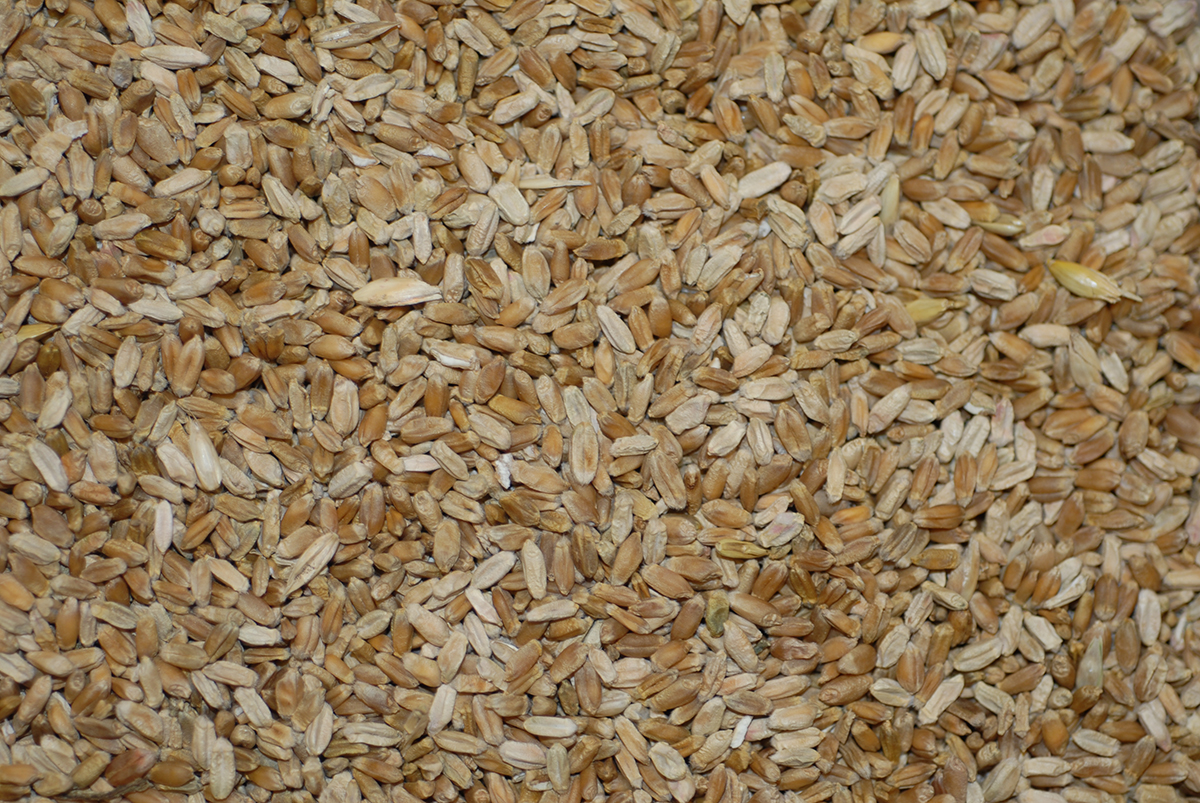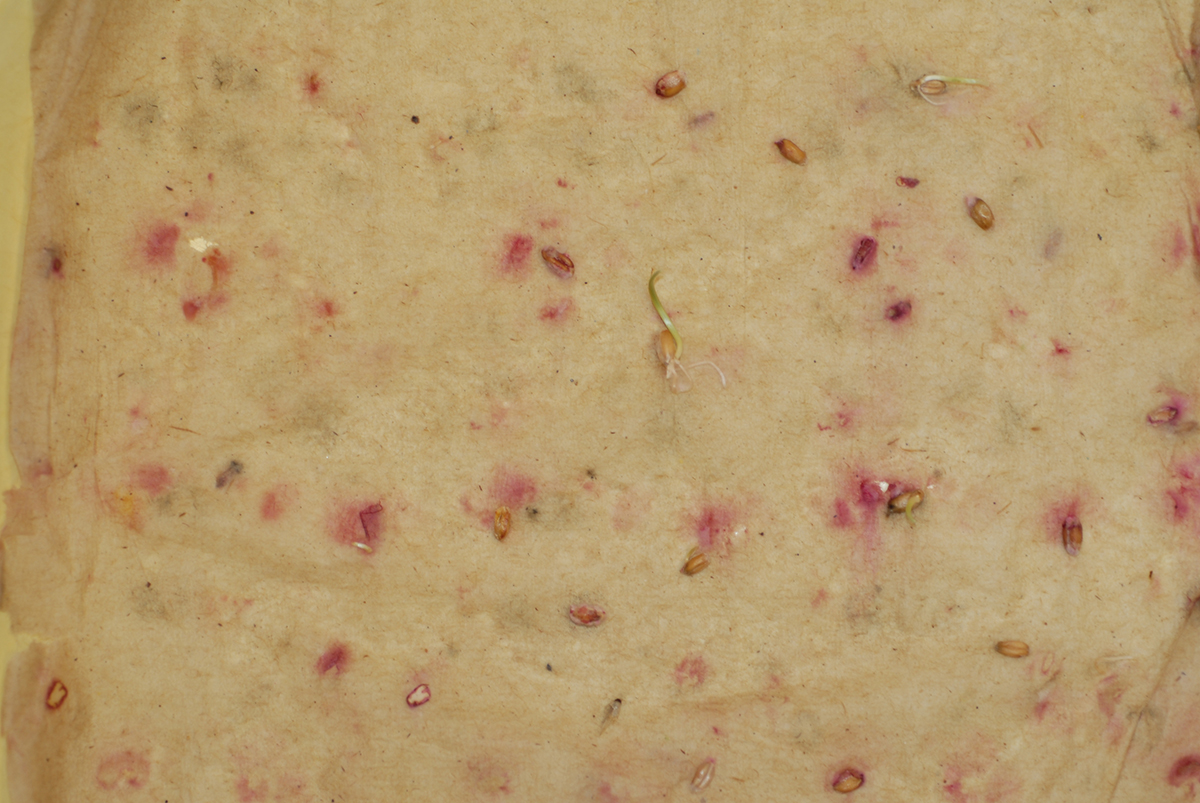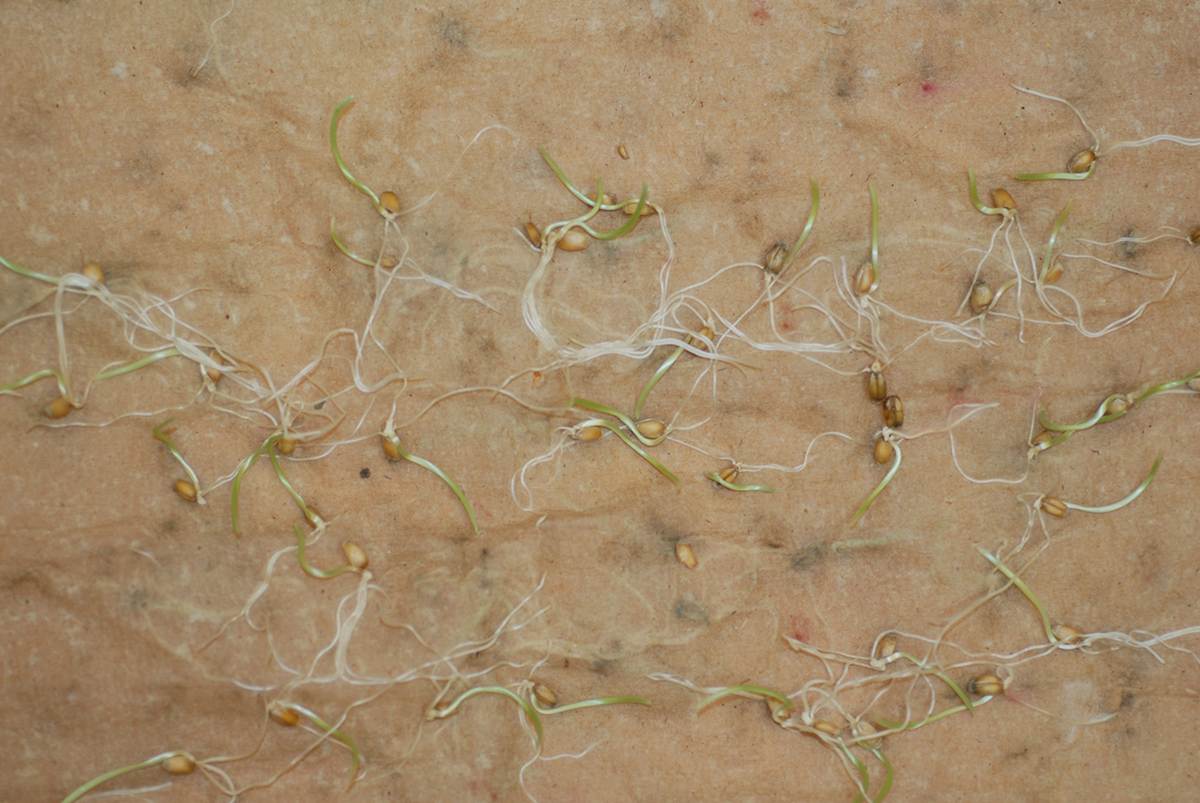Caution on Scabby Wheat

The Pluses and Minuses of Using Scabby Wheat as Cover Crop Seed
This is a relevant question considering the high incidence and severity of scab (Fusarium head blight) in Nebraska wheat this year (Figure 1). Fields that were not sprayed had severe scab, resulting in nearly 100% Fusarium-infected grain at harvest (Figure 2).

Planting scabby wheat grain as seed for a cover crop may sound like a bargain. However, stand establishment will likely be poor (Figure 3, compare with Figure 4) because the Fusarium in the seed will infect the seedlings, reducing emergence or causing seedling blight after emergence. Some of the seed will not germinate at all due to Fusarium infection. The result will be in an uneven stand that cannot provide the full benefits of a cover crop.
Another reason why scabby wheat grain should not be used as seed for a cover crop is the introduction of a high concentration of Fusarium inoculum in the field. When scabby grain comes in contact with moisture in the soil, the Fusarium spores germinate and form mycelium. Survival structures of the fungus, known as chlamydospores, form in the mycelium and remain in the soil for many years, providing inoculum that infects subsequent crops. Fusarium mycelium will infect seedlings of many field crops including corn, soybean, and wheat, causing damping off and seedling blights. It also will infect the roots and crowns of plants that survive, causing root and crown rots. As a result, yield will be significantly reduced.


The potential — yet largely uncertain — rewards associated with planting scabby wheat as a cover crop are out-weighed by these known risks. The best strategy is to destroy highly scabby grain by dumping it in a landfill or, better, incinerating it. The alternative is to clean it thoroughly and treat it with a systemic seed treatment fungicide before planting it as a cover crop. However, due to the very high levels of scab in fields that were not sprayed with a fungicide at flowering, most of the grain is so severely damaged that cleaning and treating it with a fungicide will not be effective and will certainly not be economically justifiable.
Another alternative is to use scabby grain as feed for livestock. However, due to the high concentration of vomitoxin in the grain, care must be taken to measure the levels of vomitoxin and ensure they are below the maximum advisory limits (see previous CropWatch article) before feeding. Certain livestock are very sensitive to vomitoxin and should not be fed highly scabby wheat grain.
Roger Elmore, Extension Cropping Systems Specialist
Daren Redfearn, Extension Forage/Crop Residue Specialist
Stephen Wegulo, Extension Plant Pathologist
Online Master of Science in Agronomy
With a focus on industry applications and research, the online program is designed with maximum flexibility for today's working professionals.
